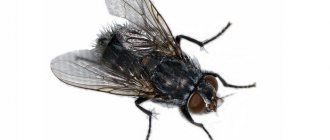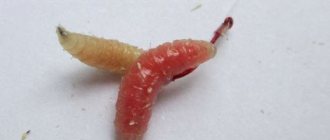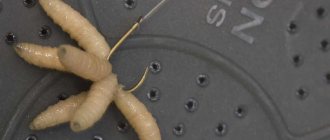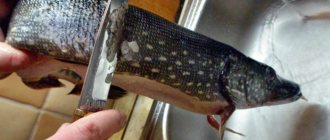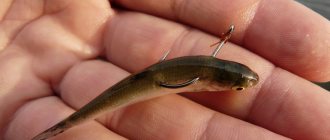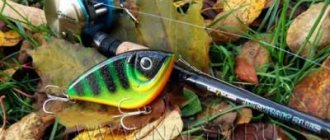Causes of parasites in the home
In the old days, the presence of parasites in houses and city apartments was quite common. Classic examples are an infestation of cockroaches in the kitchen or bedbugs in the bedroom. Thanks to the invention of new means of combating harmful insects and the use of modern finishing materials, household pests were dealt a crushing blow. The change in the internal microclimate of residential premises played a positive role, which led to the disappearance of favorable conditions for the habitation of annoying “neighbors”.
Currently, such cases have become much less common, but they do occur occasionally. For example, the appearance of white worms on the kitchen ceiling is familiar to many residents of high-rise and private houses. As a rule, this happens so unexpectedly that people are at a loss about the reasons for such a misfortune. The question also arises of what exactly we are dealing with.
Insects of this type independently enter the home from the outside. For this to happen, there must be favorable conditions in the house for their habitat and reproduction. This situation is quite serious and requires an immediate response. Otherwise, all this can lead to the most dire consequences. Usually, in case of delay, in the future you will have to deal with a large number of moving larvae and moths flying everywhere.
White worms on the ceiling in the kitchen - what are they?
The worms on the kitchen ceiling are the larvae of the familiar food moth.
The main danger lies in the short reproduction cycle of this parasite:
- After the adult female lays eggs and the appearance of the larvae, no more than 7-14 days pass.
- The life span of a white larva before turning into a small moth is 40-60 days.
- Once in favorable conditions, food moths begin a wave-like reproduction process that is difficult to interrupt. Conditions for the spread of insects are created by apartment residents without even knowing it.
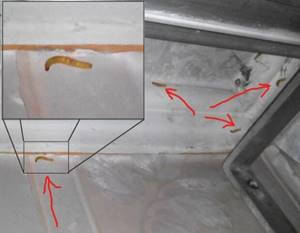
The main danger comes from the larvae. An adult moth lives no more than 5-7 days and does not cause much harm. She even lacks an organ for eating. At the same time, food moths lay their eggs in food products, thereby providing food for the future generation of parasites. The number of eggs laid at one time can number several hundred. If the surrounding atmosphere is acceptable, they are almost immediately ready to turn into a whole colony of larvae.
The most comfortable living conditions for food moths:
- Air temperature from +23.
- Humidity – 45-50%.

A warm place with plenty of food is the ideal environment for white worms to breed quickly on your kitchen ceiling. Females most often lay eggs on shelves and in cabinets in the kitchen. This is where, as a rule, stocks of porridge, cereals and dry semi-finished products are located. Only 7-14 years will pass, and a huge mass of larvae hatched from eggs will begin to feed on edible bulk and dry foods.
Studies have shown that a colony of 500 larvae can spoil up to 100 kg of food. The waste products secreted by parasites contaminate cereals or porridges, making them completely unsuitable for consumption. Therefore, you should not be careless about moths flying in the kitchen. Otherwise, very little time will pass, and numerous worms will appear on the ceiling.
About maggots
We most often suffer from flies in the summer, in August and July. They begin to multiply.
About the appearance of an insect
Fly development:
- Eggs. These insects are prolific. A fly can lay up to 150 eggs at once. Flies hide them where there is a lot of garbage and manure, and it is humid. But the female can choose another place for them: kitchen waste, meat and fish, rotten vegetables.
- Larvae. After 8 hours or a day, a larva hatches from the egg, the same maggot. She remains in this environment and eats spoiled food. In the larval stage, the insect lives from 5 days to 2 weeks.
- Doll. The maggot matures and the larvae begin to pupate. This takes 3 or 4 weeks. First, the insect moves to a dry place where it becomes a pupa.
- Fly. Their pupae are hatched by a fly that lives for only a month. But even during this time, one insect (female) lays from 500 to 2 thousand eggs. And the process of development of the fly begins again.
Why are fly larvae dangerous?
Why is it so important to fight fly larvae, why are they dangerous? These insects are carriers of pathogens of many intestinal diseases. But that's not all. If you buy meat and fish at the market, where they are not stored in the freezer, green flies will lay eggs in them. Larvae emerge from them. If you eat 1̶ 2 maggots along with these products, nothing bad will happen, although it is unpleasant. They will leave the body.
As soon as you leave fresh meat unattended, flies immediately “sprinkle” it
But if a person has swallowed a lot of insects, then his health will deteriorate sharply: his stomach will hurt, he will feel sick, vomiting, diarrhea will appear, and he will suffer from itching. Doctors advise taking a saline laxative immediately. Maggots are not that dangerous for humans. But those who vacation in Brazil, Mexico, Africa should be afraid of local flies; their larvae live in the human body and eat it. Therefore, in the tropics you cannot run barefoot, dry clothes under trees, and you must constantly use repellents.
Why does food moth appear and what does it mean?
Adult moths are small moths measuring 8-10 mm. Most often we encounter moths of gray and brownish-yellow color. It may seem that such a small insect does not pose any particular danger to humans, but this impression is deceptive. The consequences can be the most unpredictable and unpleasant. After an expensive repair, it is very unpleasant to see caterpillars on the ceiling in an apartment. To remove them, you will need to dismantle the ceiling system, followed by thorough cleaning and disinfection of the entire base. This applies to corners, ceilings and frame structures. Ceiling screed is more convenient in this regard, because... has no hidden cavities.

White worms on the ceiling are the result of food moths in the home. It will not be able to start in the house on its own. As a rule, it is brought in along with low-quality food products by the owners themselves. The store or market is full of moth-infested products, which are very difficult to identify. First of all, this applies to porridge, flour and other bulk semi-finished products. According to the rules, they must undergo mandatory fumigation during storage. However, in practice, this condition is often ignored by unscrupulous suppliers and food manufacturers. After packaging, such goods end up on store shelves.
After contaminated products enter the kitchen or other warm room, the above-described process of ripening of eggs and larvae begins. Caterpillars quickly turn into pupae and then into butterflies that can lay new eggs. Worms crawling on the kitchen ceiling are the final stage. Ceilings are very convenient for parasites to live in, because... This is where the air is warmest and most humid. In addition, this surface is the least likely to be cleaned for obvious reasons.

It is on ceilings that the transformation of larvae into pupae most often occurs. The reason why white worms appear on the ceiling is an instinct that makes them crawl up the walls and kitchen furniture. They look for the quietest and most secluded place, finding it on the ceiling base. In this case, the material used to make the ceiling is practically irrelevant. It can be plastic, stretch fabric, wooden lining, various panels.
It is important to keep in mind the omnivorousness and gluttony of food moth larvae. They are able to chew through bags and bags of food, looking for suitable food for themselves. After the caterpillars die off and their metabolic products pollute the inhabited kitchen space. Products contaminated in this way should be thrown away immediately.
Medical point of view on larval therapy
The opinion of doctors regarding the non-standard method of treatment is ambiguous. Some doctors talk about additional infection of the wound, emphasizing that the procedure is painful and the patient receives new unpleasant sensations.
Adherents of alternative medicine support the old method of treatment with maggots. Important advantages of larval therapy:
- Maggots get rid of areas of necrosis and rotting. Worms do not eat healthy tissue. They cleanse the skin of dead epithelial cells.
- Blowfly larvae reduce the activity of pathogenic microorganisms inside the wound. They prevent the spread of infection to underlying structures and through the bloodstream.
- Maggots stimulate reparative processes in the pathological area of the body. Due to allantoin, a secretion of the larvae, the integrity of the skin is restored.
Not everyone can agree to the procedure. White worms in a wound are an unpleasant sight that evokes negative emotions. Patients must understand that no amount of antimicrobial drugs can do the same as maggot therapy. Hopeless cases are treated with maggots in 2-3 days. The larvae gnaw out necrotic lesions, the skin recovers faster.
If the doctor suggests an unconventional method, it is better to agree.
How to fight parasites
The appearance of caterpillars on the ceiling is a fairly common problem, which explains the fairly large number of household pest control products. To get rid of food moths, you can use folk or factory methods. An integrated approach is most effective.

All known methods of fighting moths can be divided into the following groups:
- Prevention.
- Destruction by physical and mechanical impact.
- Chemicals.
Prevention
This procedure includes the following techniques:
- Remove non-perishable food items from the kitchen. It is best to store cereals and cereals in the pantry or on the balcony. Cold air will stop the larvae from breeding. In cases where products of this type show signs of contamination, they must be treated thermally. The easiest option is to bake them in the oven.
- Do not store flour, sugar and cereals in large quantities in a room not equipped for this purpose. It is recommended to buy such products in small quantities that will be used up quickly.
- To increase the effectiveness of preventive measures, it is recommended to use proven traditional methods. As experts say, food moths do not tolerate sharp and pungent odors. To scare it away, place dried wormwood, mint or geranium inside kitchen cabinets.
- Another folk method is to use various spices (cloves, bay leaves or allspice) to fight moths. They are laid out in rag bags on grocery shelves.
However, you should not limit yourself only to folk methods, because they do not always bring the desired effect in the fight against worms on the ceiling.
When can maggots appear in a wound?
Maggots appear at the site of pathology for two reasons. In the first option, an unpleasant situation occurs when personal hygiene rules are not followed or there is a long absence of treatment. Larvae are more often observed inside animal wounds.
In human society, the situation is often observed in patients leading an asocial lifestyle. Flies settle on the damaged surface of the skin and lay eggs. After a few days, larvae appear, from which maggots develop. The pathological process takes about 2 weeks. The patient feels constant pain and a characteristic smell of rot from the wound.
The second case is the use of maggots as an old method of treatment: larval therapy. The cleansing procedure is carried out using blowfly larvae. They eat rotting flesh and prevent the process from spreading to neighboring tissues.
The method of alternative medicine is practiced for gangrene of initial and advanced forms. Worms remove necrotic lesions. New epithelial and connective tissue develops at the wound site.
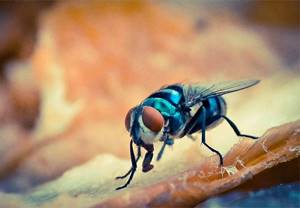
How to deal with worms
Larvae on the ceiling are a sign of a serious stage of parasite infestation in your home. This suggests that certain consequences cannot be avoided. Specialized stores offer a large number of fairly effective means of combating food moths and their larvae. To achieve an acceptable result, it is advisable to combine several methods: parasites sometimes adapt to the components of one product, and they no longer harm them.

An integrated approach involves the following procedure:
- Inspection of the kitchen area, including pantry, cabinets and mezzanines. The purpose of this event is to discover the habitat and breeding place of parasites.
- Carry out mechanical cleaning of the premises. It must be accompanied by physical destruction of the larvae. This method of moth control is the most effective.
- Wash kitchen cabinets, ceiling trim, panels, shelves, and cornices with special products. Dishwashing gel and a soft sponge are suitable for this. When cleaning ceiling trim, it is necessary to take into account the degree of moisture resistance of the material.
- Carry out heat treatment of the dishes where the spoiled products were located: to do this, they are scalded with boiling water. After this, they need to be washed using laundry soap and vinegar. These simple remedies, available in every home, pose a great danger to food moths and their larvae.
Chemical compositions for combating food moths are sold in the form of aerosol cans. We are most often talking about insecticides, which are poison for moth larvae. After contact with the substance, the insects quickly die: in this way the entire colony can be destroyed. When using this very effective remedy against moths on the ceiling, you must wear a respirator and protective clothing.

Before starting chemical treatment, it is imperative to remove all products from the kitchen. It is recommended not to use a kitchen treated with aerosols for 24 hours. After waiting for this pause, they thoroughly clean all surfaces of the room, washing off the remnants of the toxic substance and sweeping away insect corpses. The cleaned room must be thoroughly ventilated, because... Inhalation of product residues may lead to deterioration of health.
In addition to chemicals, effective moth traps are available on the market. Their task is to disorient adult individuals and create serious obstacles to their further reproduction. Models of such devices vary, so you should carefully read the instructions before use.
In warm weather
On hot days, the bait is stored in the refrigerator. Correct principle:
- Prepare the maggot (washing and drying) and place in a clean container. The capacity is selected according to the principle, which is not a pity. A prerequisite is that the container closes tightly.
- Sprinkle the finished bait with flour, bran and sawdust from deciduous trees. If the necessary components are not available, you can replace them with sifted and purified sand or oatmeal. The mixture of substances cannot be made more than 1 to 3 by weight of the larvae.
- Place the finished container in the refrigerator. The temperature in the refrigerator is no more than 3 degrees Celsius. It is recommended not to change the standard indicator.
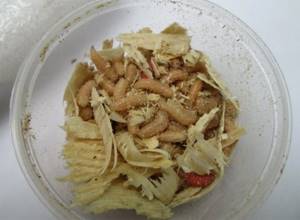
Storing maggots in sawdust
If all recommendations are correctly followed, the larva will hibernate, maintaining a standard state for the next 60–120 days.
Advice! Do not be alarmed if the bait does not show signs of life after removing it from the refrigerator. After 2–3 minutes the larvae begin to wake up.
If, after 5 minutes after defrosting, the maggots do not move, an error was made at the preparation stage.
To learn more:
Twister bait: the subtleties of fishing for perch and pike
Results
Despite the ugliness of the situation with worms on the kitchen ceiling, it does not pose a particular danger to human life and health. The appearance of parasites has rather moral and aesthetic consequences: this is especially true for squeamish people. No one likes larvae crawling on the ceiling or moths flying in large numbers. The sooner the fight against a detected infection is started, the less time and effort it will take.
The main task is to find the habitat of the parasite colony. As practice shows, first of all it is necessary to carefully inspect bags or bags of bulk products. It is best to immediately throw away a discovered package containing contamination outside the house. If the larvae and moths have already spread sufficiently throughout the home, general cleaning and the use of chemical agents (aerosols) will be required.
However, it is best not to resort to extreme methods. Among the most effective preventive methods is the constant maintenance of cleanliness and order in dry food storage areas. Aromatic herbs and spices, the smell of which cannot be tolerated by moths, are helpful when placed in the pantry or cabinets. When purchasing cereals, pasta, sugar and other bulk products, you must carefully check their expiration date and the integrity of the packaging.
Features of infection
Dead biological tissues attract lower insects, which in this case act as orderlies. Maggots can be found in the bodies of both living and dead people.
These processes are natural and do not require separate explanations. It is impossible to insure against cases where maggots appear in living tissue, despite their rarity.
One of the reasons for the appearance of helminths is advanced gangrene or a bleeding wound. Infections occur most often in the summer.
The most common method of infection: the fly lays its larvae in an open wound. If the wound bleeds, there is suppuration, but the area is not bandaged and treated, then the insect lays eggs.
Subsequently, the larvae remain in the upper part of the epidermis, which creates favorable conditions for the development of worms. If an open wound appears, it is important to take several steps:
- Careful processing
- Applying a bandage
- Bandaging.
If treatment has not been carried out, the person feels movement in the wound and severe pain, but mistakes this for an inflammatory process. The larvae remain in the wound for several days, like in an incubator.
When the worms in a person's wound reach 15 mm, they emerge to develop into pupae. Further development occurs outside the human body. If there is infection and dirt in the wound, an abscess can quickly develop.
People also often become infected by eating contaminated food. When a person eats an infected product, the larvae enter the body and some of them continue their life activity inside.
The fly clutch can remain in:
- Throat,
- Nose,
- Gastrointestinal tract.
These forms of the disease are classified as myiasis:
- Oral,
- Nasal,
- Intestinal.
They pass with feces, during which time, in addition to unpleasant sensations, the person becomes a carrier of infection.
Interestingly, maggots can manifest themselves positively in humans. The studies performed have proven that these worms, when used correctly, can not only heal the wound surface, but also accelerate its healing.
This original treatment is currently used in several clinics in the USA and UK. But, in any case, this problem cannot be solved without the use of antibiotics.
Maggots do not affect healthy tissue and only affect necrotic tissue. Thus, there is no need to take antibiotics, so the problem of drug resistance is eliminated.
Hygiene should be systematically observed, namely:
- Wash your hands with soap,
- Do not eat fruits and vegetables that are not properly washed
- Beware of questionable dried and smoked products.
It is important not to eat food with dirty hands, especially after counting money or shaking hands.
It is not recommended to try on other people's things, especially those that have come into contact with other people's skin. Examples include T-shirts, T-shirts and jeans. Thus, you can quickly become infected with worms. Most, namely their larvae, are found in the pile of clothing.
Care should be taken to keep insects away, especially cockroaches, fleas and mosquitoes. They are carriers of dangerous infections. If a bite or abrasion occurs, you need to immediately treat the wound to protect yourself from helminthiasis.
You should not swim or wash your hands in uninhabited bodies of water. When they come into contact with contaminated water, the worms destroy the protective cover and get under the skin.
If any minor discomfort occurs, you should promptly seek medical help to avoid dangerous complications. And the video in this article will demonstrate the danger of worms in a wound.
Use a special insect repellent, such as Reid. Of course, it is not as good as permethrin, but it is also quite effective in combating maggots, although it does not act immediately, but after some time (30 minutes or more). This product acts as a fumigator, helping to get rid of flying insects, cockroaches, ants, etc.
Use bleach. Household bleach is excellent at killing maggots. Dilute the bleach with water in a 1:1 ratio and pour the mixture directly onto the maggots. If maggots fill the trash can, pour out the bleach and cover the bin with a lid, so the insects will simply suffocate from the chemical fumes. After that, all you have to do is rinse out the bucket of bleach. Very comfortably!
If none of the above is found, try using machine oil or brake and carburetor cleaner. These products are especially suitable in cases where there are really a lot of maggots, a whole trash can, for example. Mix carburetor cleaner with a few liters of hot water. Pour the product into the trash can (after emptying it of debris), cover with a lid and wait a few hours until the toxic fumes from the product do their job. Clear the box of dead larvae. Remember that carburetor cleaner is very poisonous. Do everything possible to prevent the product from coming into contact with your skin, and also try not to inhale its toxic fumes. Always wear protective clothing and gloves. After use, use carburetor cleaner diluent. Do not mix carburetor cleaner with other chemicals. The product contains a large amount of chlorine, which can react with another substance, which can form a toxic gas, contact with which can be dangerous to life and health. Use the product at your own discretion.
Use a chemical that contains permethrin. This synthetic chemical is used to kill insects and mites. The chemical is also used as a remedy for scabies and lice, and is available in the form of shampoo or cream. For the simplest solution, boil water, add permethrin dog shampoo and spray on the maggots. Permethrin is safe for skin and hair, but its contact with the mucous membranes of the eyes, nose and ears is undesirable. If the product accidentally gets into your eyes, you should immediately rinse them with plenty of water. If you don't have a dog shampoo that contains permethrin, you can use a medicated shampoo or anti-lice spray. Such preparations always contain permethrin as an active substance. Permethrin and other synthetic pyrethroids are dangerous for cats and fish. Products that are suitable for dogs can be fatal for cats and fish.
Pour boiling water over the maggots. This method is ideal for you if maggots have spread in the trash can. Bring a large pot of water to a boil. Remove any remaining debris from the bucket that maggots feed on. When the water boils, carefully pour the boiling water into the bucket over the maggots. If you can, cover the trash can with a lid to keep the heat in.
Sprinkle the area with the insects with diatomaceous earth. Diatomite is a sedimentary rock used for cleaning and insect control. (Especially good against fleas!) Sprinkle the area where the maggots are located with a small amount of diatomaceous earth and wait a little. Diatomaceous earth sticks to the larvae's body and slowly dehydrates them. As a result, maggots die from dehydration. Problem solved!
Sprinkle the area with the insects with salt or lime. These substances work in the same way as diatomite - they gradually dry out the bodies of the larvae, as a result of which they die from dehydration. Of course, the "lime" we're talking about is a little different from fruit lime. The lime used in this substance is lime composed of calcium (calcium oxide or hydroxide).
Pour a mixture of water and vinegar over the maggots. Maggots will not survive in a vinegar environment, which means that removing the insects this way will prevent them from recurring in the future.
Freeze the insects. Again, not the best solution for a whole swarm of maggots, but not bad for a few insects. Place the maggots in a bag, close it tightly, put it in the freezer and wait for the insects to die from the cold. This method, as well as boiling water, may not seem very pleasant, but you want to get rid of the insects and do everything possible to prevent them from infesting your home again.
First of all, you need to fight the source of the problem, and not its consequences. The flies reproduce and immediately lay larvae, which later turn into maggots. Flies breed on decaying meat or fish. This means that if you want to get rid of maggots once and for all, you should not throw leftover meat and fish in the trash. Here are some solutions when dealing with the source of the problem. Before throwing away leftover meat and fish, wrap it in paper. Wrap the bones, scales, and meat itself in a paper towel before throwing it in the trash. It will be difficult for flies to get to the remains of meat and fish, and, therefore, they will not be able to lay larvae. Process meat and fish. Have you ever tried making soup stock from just a few bones? It's very easy and simple. All you need to do is place the leftover bones in a pan of boiling water, add bay leaves and spices, and simmer for at least an hour. Place some meat/bones in a separate refrigerator (or freezer) until the trash is taken out, then throw it all away together. Meat will not spoil quickly if it has been previously frozen.
Use the old beer trick. Pour the beer into an open container and place it next to the maggots. They will try to get into the dishes and end up drowning in the beer. This method is suitable if there are very few maggots, but if there are too many insects, it is better to use another method.
Use essential oils. Essential oils of mint, eucalyptus, and bay leaf work well against flies and larvae. Here are some ways to use oils to prevent insects: Apply some essential oil directly to the surface of the trash can. Dilute some essential oil with water and pour the mixture into a spray bottle. Spray the resulting liquid inside the trash can. Now the trash can is protected not only from insects, but also from unpleasant odors. Wash the essential oil bucket. Add a few drops of oil to the cleaner and rinse the bucket.
Clean your trash can regularly. If there are always leftovers of food inside the bucket, then the appearance of insects in it will not be long in coming. Out of sight, out of mind, right? Until the maggots fill your bucket again and you wonder what you did wrong. Clean your trash can as often as possible to prevent maggots from appearing.
Place mothballs in the trash can. Naphthalene comes in the form of small balls containing insect repellent substances. Place one or two mothballs in your trash can and close the lid regularly to prevent insect infestations.
Keep the bucket as dry as possible. Larvae love a moist environment, so do not create favorable conditions for them. Make sure the bags don't have holes, don't throw trash past the bin, and remove any moisture that gets to the bottom of the bin as quickly as possible. Here's a trick to help keep the bottom of your bucket dry. You know those absorbent bags that are usually found in shoe boxes and other packaging? Place several of these bags at the bottom of the bucket. The bags contain an absorbent substance that instantly collects moisture. In general, this is the main substance in the composition of diatomite.
Dream Interpretation: meaning, interpretation of dreams and visions
30.01.2021
Justin Trudeau biography. Justin Trudeau. Hugs with a rainbow unicorn
30.01.2021
Why dream about giving birth to twins?
30.01.2021
